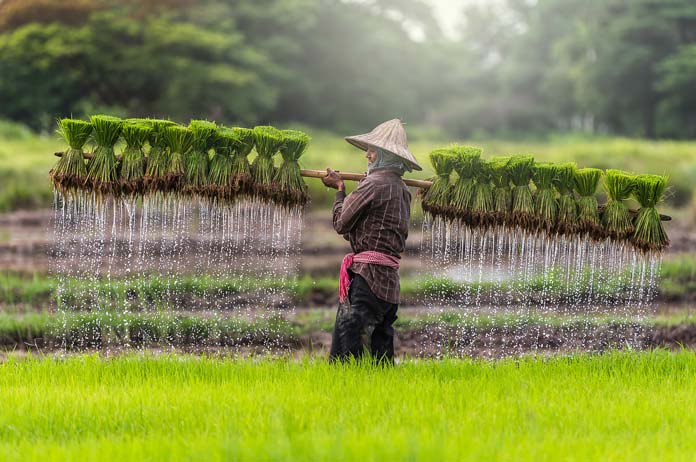Cambodia Agricultural Sector Prospects 2024
The agricultural sector in Cambodia is expected to exhibit slight growth prospects in 2024, with an anticipated increase of 1.1 percent, building upon the growth of 0.9 percent in 2023.

This positive trajectory is underpinned by a combination of factors, including the expansion of crop production, the recovery of the fisheries industry, and the stability of the livestock sector.
While the agricultural sector's growth rate is relatively lower compared to the industrial and service sectors, which are projected to grow at 8.5 and 6.9 percent, respectively, according to the Ministry of Economic and Finance Budget Brief for 2024, agriculture remains a crucial contributor to Cambodia's economy. The MEF Budget Brief did not provide a forecast for Cambodia’s construction sector, the fourth pillar of the country’s economy.
What Will Contribute To Cambodia's Agricultural Performance In 2024?
Crop Sub-Sector Positive Trend
The Ministry of Economic and Finance said the crop sub-sector is experiencing a positive trend driven by various free trade agreements, including the Cambodia-China Free Trade Agreement and the Cambodia-Korea Free Trade Agreement, along with participation in the Regional Comprehensive Economic Partnership (RCEP).
For example, in 2023 trade to RCEP members rose by 28.8 per cent according to the General Department of Customs and Excise (GDCE). Additionally, government investments in tax incentives for importing agricultural raw materials and financing to boost domestic production play a significant role in this growth.
Livestock Sub-Sector Stability
The report added that the livestock sub-sector continues to maintain stability, thanks to the expectation of increased production driven by domestic demand.
As the tourism sector steadily recovers, coupled with government intervention measures and the implementation of development partner projects, this sub-sector is set to expand.
Fisheries Sub-Sector Recovery
The Ministry of Economic and Finance Budget Brief suggests that the fisheries sub-sector is poised for recovery in 2024, primarily due to the expected growth in freshwater catchment areas.
“This recovery is being facilitated by policies aimed at curbing illegal fishing activities, coupled with gradual improvements in aquaculture production,” the report stated.
It also added that the Royal Cambodian Government's support in addressing structural challenges, providing financial aid, disseminating technical knowledge, and promoting the use of high-efficiency and quality fish breeds will contribute to a positive trend.
Reflecting On Cambodian Agriculture 2023
In 2023, Cambodia generated USD $4.3 billion from agricultural product exports, shipping 8.45 million tons of agricultural goods to approximately 75 countries and regions throughout the year.
Key exported items included rice, rubber, cassava, mangoes, fresh bananas, pepper, cashew nuts, longan, corn, and palm oil, among others. The primary destinations for Cambodia's agricultural exports were China, Vietnam, and Thailand.
In 2020, the Cambodian government, in collaboration with the United Nations Development Program (UNDP), launched the National Cassava Policy 2020-2025. The objective of this policy is to enhance the production and export of cassava, a cash crop, for farmers. Cambodia is currently the fourth-largest cassava producer in Asia and the tenth-largest globally, with an annual production of over 12 million tons of fresh cassava.
In June 2023, the Ministry of Commerce introduced the National Policy on Cashew Nuts for 2022-2027. This policy serves as the cornerstone for positioning Cambodia as the leading supplier of cashews. It adopts a three-pronged approach that focuses on improving the production, processing, and export strategies for cashews in the country.
Cambodia’s Agricultural Growth: 2014-2024
Over the past decade, Cambodia's agricultural sector has experienced fluctuations in its growth rate. Data from CEICDATA, Asian Development Bank (ADB) and Ministry of Economy and Finance (MEF) reveals the following trends:
- 2014: 0.3 percent
- 2015: 0.2 percent
- 2016: 1.3 percent
- 2017: 1.7 percent
- 2018: 1.098 percent
- 2019: -0.5 percent
- 2020: 0.4 percent
- 2021: 1.2 percent (Source: ADB)
- 2022: 0.7 percent (Source: ADB)
- 2023: 0.9 percent (Source: ADB)
- 2024: 1.1 percent growth forecast (Source: MEF)
These figures illustrate the sector's resilience and its ability to adapt to changing conditions. Notably, the expected growth in 2024 indicates a positive trajectory for Cambodia's agriculture.